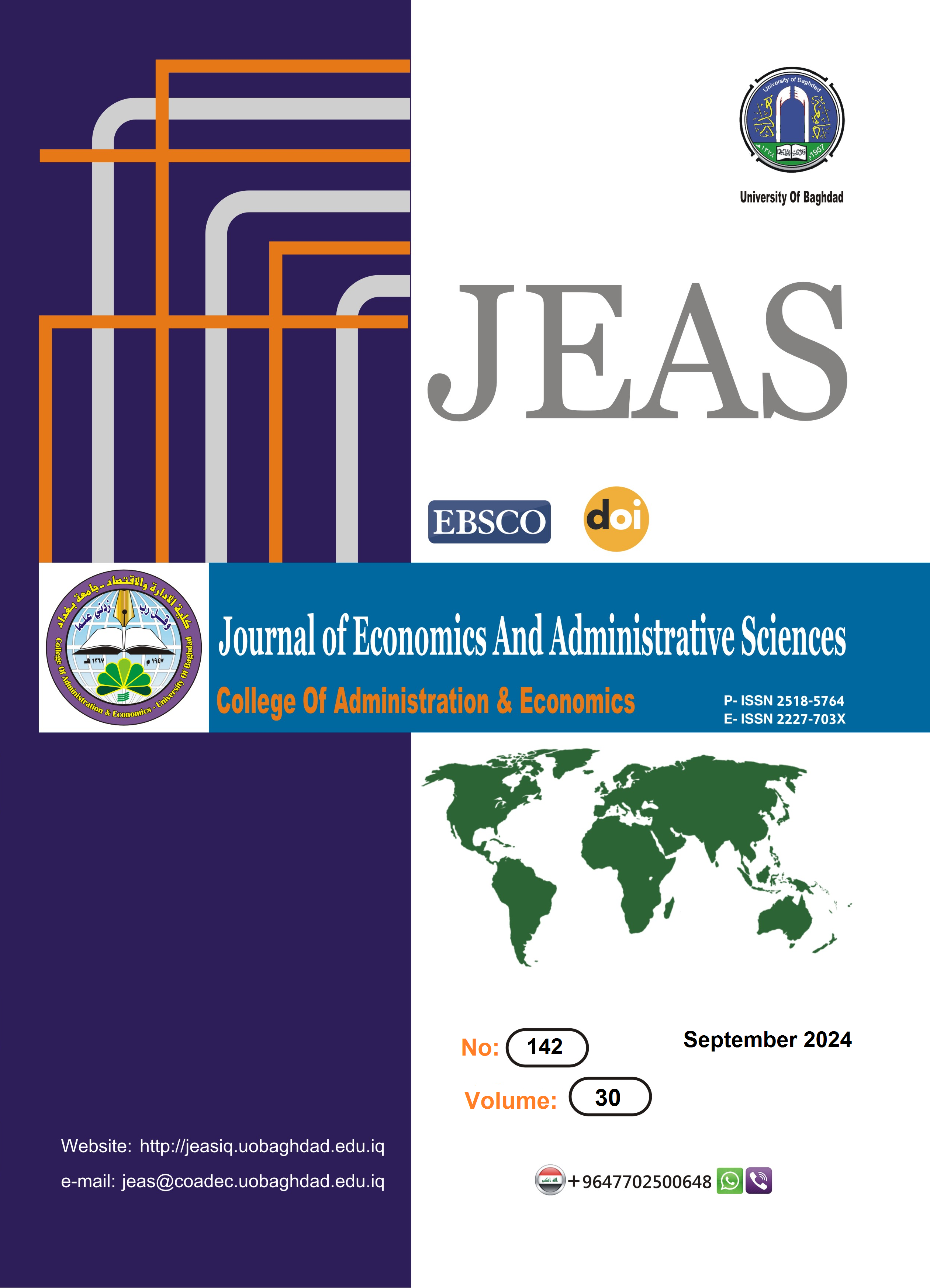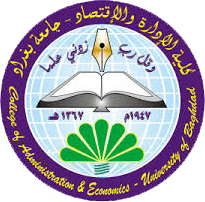A Hybrid Model for Financial Forecasting Based on Maximal Overlap Discrete Wavelet Transform; Evidence from Chinese Exchange Rates.
DOI:
https://doi.org/10.33095/hevp1268Keywords:
Maximal Overlap Discrete Wavelet Transform (MODWT), Radial Basis Function Neural Network (RBFNN), Support Vector Regression (SVR), Autoregressive Integrated Moving Average, GJR- GARCH.Abstract
In some time series, especially financial time series, the high/low frequency sometimes occurs in short time scale, or for a specific period, the phenomena happen such that not observed in the rest of the time series; in the situation, decomposition of the time series into constitutive series can be very useful ,because the wavelet transform has the ability to transform the time series into low-and-high-frequency information, which allows detecting trends, breakdown points, and discontinuities in the data that may it is lost when other analysis methods are used. to cope with non-stationary time series forecasting and with the aim of improving the forecasting accuracy of the volatility pattern in exchange rates , we use the wavelet transform with hybridization methodology to build a hybrid model combining Maximal Overlap Discrete Wavelet Transform (MODWT), Autoregressive Integrated Moving Average (ARIMA), GJR- GARCH model and Radial Basis Function Neural Network(RBFNN) model, so that it is capable of capturing the volatility in financial time series, by applying it to the Chinese Yuan exchange rate for the period ( 2015/1/5 to 2022/11/11) , where the wavelet transform technique provides a useful feature based on data analysis, which improves the performance of the model. The time series of exchange rates were analyzed into their (approximation and detailed) coefficients at three levels using the Maximal Overlap Discrete Wavelet Transform (MODWT). The experimental results of this research demonstrate that the proposed model has a higher prediction accuracy than the single models (SVR and RBFNN) and other hybrid models (MODWT-ARIMA-GJR-GARCH-SVR and ARIMA-GJR-GARCH).
Paper type Research paper.
Downloads
References
References:
Ahasan, Md.Nazmul , Abdul Khalek, Md. and Alam, Md.Mesbahul. (2019). “Modeling via Wavelet GARCH Algorithm on Multivariate ENSO Index”. International Journal of Scientific and Research Publications (IJSRP), Vol.9, No.7, pp.9195. doi:https://doi.org/10.29322/ijsrp.9.07.2019.p9195.
Al Rababa’A, A.R. (2017). Uncovering Hidden Information and Relations in Time Series Data with Wavelet analysis: Three Case Studies in Finance. PhD thesis. University of Stirling Scotland, United Kingdom..
ALhameed, A. (2020). Price Efficiency and the Forecasting of Financial Market Index Using Econometric Models and Artificial Neural Networks (A Comparative Study of Damascus Stock Exchange and Some Arab Financial Markets). PhD thesis, University of Hama, Hama.
ALSHAMMARI, T.S., ISMAIL, M.T., AL-WADI, S., SALEH, M.H. and JABER, J.J. (2020). “Modeling and Forecasting Saudi Stock Market Volatility Using Wavelet Methods”. The Journal of Asian Finance, Economics and Business, Vol.7, No.11, pp.83-93. doi:https://doi.org/10.13106/jafeb.
Amirian, M. and Schwenker, F. (2020). “Radial Basis Function Networks for Convolutional Neural Networks to Learn Similarity Distance Metric and Improve Interpretability”. IEEE Access, Vol. 8, pp.123087–123097. doi:https://doi.org/10.1109/access.2020.3007337.
Andersson, O. and Haglund, E. (2014). “Financial Econometrics: A Comparison of GARCH type Model Performances when Forecasting VaR”. Bachelor of Science Thesis Fall 2014, Department of Statistics, Uppsala University.
Anjoy, P. and Kumar Paul, R. (2017). “Wavelet Based Hybrid Approach for Forecasting Volatile Potato Price”. Journal of the Indian Society of Agricultural Statistics, [online] Vol.71, No.1, pp. 7–14. Available at: www.isas.org.in/jisas [Accessed 2017].
Chandar, S., Sumathi, M. and Sivanandam, S.N. (2016). “Prediction of Stock Market Price using Hybrid of Wavelet Transform and Artificial Neural Network. Indian Journal of Science and Technology”.Vol.9, No.8. doi:https://doi.org/10.17485/ijst/2016/v9i8/87905.
Chang, W.-Y. (2013). “An RBF Neural Network Combined with OLS Algorithm and Genetic Algorithm for Short-Term Wind Power Forecasting. Journal of Applied Mathematics”.Vol.1, No.3, pp. 1–9. doi:https://doi.org/10.1155/2013/971389.
Chen, G., Wang, D., Zhao, S. and Fu, S. (2016). “Research on GA-RBF Optimization Algorithm in the Prediction of Yield Loss of Maize Diseases and Pests”. 10th International Conference on Computer and Computing Technologies in Agriculture (CCTA), Dongying, China. pp. 257-267
Dghais, A.A.A. (2016). The Causal Relationship Between Stock Markets: A Wavelet Transform-Based Approach. Phd Thesis, University Sains Malaysia, Malaysia.
Edward, N. (2011). “Modelling And Forecasting Using Time Series Garch Models: An Application Of Tanzania Inflation Rate Data”. M.Sc. (Mathematical Modelling) Dissertation.
Fan, S., Hao, D., Feng, Y., Xia, K. and Yang, W. (2021). “A Hybrid Model for Air Quality Prediction Based on Data Decomposition”. Vol.12, No.5, pp.210–210. doi:https://doi.org/10.3390/info12050210.
Ghaeini, V.V., Kimiagari, A. mohammad and Atrabi, M.J. (2018). “Forecasting Stock Price Using Hybrid Model Based on Wavelet Transform in Tehran and New York Stock Market”. International Journal of Finance and Managerial Accounting, Vol.3, No.11.
Gherman, M., Terebes, R. and Borda, M. (2012). “Time series analysis using wavelets and GJR-GARCH models. European Signal Processing Conference, pp.2138–2142.
Hidayana, R., Sukono and Napitupulu, H. (2021). “ARMA-GJR-GARCH Model for Determining Value-at-Risk and Back testing of Some Stock Returns”. Proceedings of the Second Asia Pacific International Conference on Industrial Engineering and Operations Management Surakarta, Indonesia, September 14-16, 2021.
Hongguang, L. (2016). Multi-frequency Analysis for High Frequency Trading. PhD thesis, University of Hong Kong, Hong Kong .
K U, J. and C Kovoor, B. (2020). “A Wavelet-based Hybrid multi-step Wind Speed Forecasting Model Using LSTM and SVR”. Wind Engineering, Vol.45, No.5, doi:https://doi.org/10.1177/0309524X20964762.
Kazem, B. (2016). Forecasting the use of generalized autoregressive conditional heteroscedastic models (GARCH) seasonality with practical application. MA. thesis, University of Baghdad, Baghdad.
Kia, A. (2012). “Using MLP and RBF Neural Networks to Improve the Prediction of Exchange Rate Time Series with ARIMA”. International Journal of Information and Electronics Engineering. doi:https://doi.org/10.7763/ijiee.2012.v2.157.
Kumar, A. and K. Joshi, L. (2011). “MODWT Based Time Scale Decomposition Analysis of BSE and NSE Indexes Financial Time Series”. Int. Journal of Math. Analysis, Vol. 5, No.27, pp.1343 - 1352.
Kumar, V., Singh, N., “Deepak Kumar Singh and Mohanty, S.R. (2017). Short-Term Electricity Price Forecasting Using Hybrid SARIMA and GJR-GARCH Model”. Lecture notes on data engineering and communications technologies, pp.299–310. doi:https://doi.org/10.1007/978-981-10-4585-1_25.
Lv, P. and Yue, L. (2011). “Short-term Wind Speed Forecasting Based on non-stationary Time Series Analysis and ARCH Model”. International Conference on Multimedia Technology, Hangzhou, China pp. 2549-2553. doi:https://doi.org/10.1109/icmt.2011.6002447.
Masset, P. (2008). “Analysis of Financial Time-Series Using Fourier and Wavelet Methods”. SSRN Electronic Journal. doi:https://doi.org/10.2139/ssrn.1289420.
Misiti, M., Misiti, Y., Oppenheim, G. and Poggi, J.-M. (2022). “Wavelet ToolboxTM 4 User’s Guide”. © COPYRIGHT 1997–2009 by the MathWorks, Inc.
Mohammed, M. and Ahmed, L. (2023). “A Proposed Wavelet and Forecasting Wind Speed with Application”. Ibn Al-Haitham Journal for Pure and Applied Sciences. Vol.36, No.2.
Nooruldeen A. Noori and Azher A. Mohammad (2022). “Dynamical Approach in studying GJR-GARCH (Q,P) Models with Application”. Tikrit Journal of Pure Science, Vol.26, No.2, pp.145–156. doi:https://doi.org/10.25130/tjps.v26i2.131.
Okasha, M. and Yaseen, A. (2016). “Comparison between ARIMA Models and Artificial Neural Networks in Forecasting Al-Quds Indices of Palestine Stock Exchange Market”. doi:https://www.researchgate.net/publication/258221036.
Pahlavani, M. and Roshan, R. (2015). “The Comparison among ARIMA and Hybrid ARIMA-GARCH Models in Forecasting the Exchange Rate of Iran”. International Journal of Business and Development Studies, Vol. 7, No.1.
Pandey, T., Jagadev, A., Dehuri, S. and Bae Cho, S. (2020). “A novel committee machine and reviews of neural network and statistical models for currency exchange rate prediction: An experimental analysis”. Journal of King Saud University - Computer and Information Sciences, Vol.32, No.9, pp.987–999. doi:https://doi.org/10.1016/j.jksuci.2018.02.010.
Paul , Dr.R., Bhar, Dr.L.M. and Paul, Dr.A.K. (2020). “Study of Long Memory and Periodicities in Climate Variables in Different Meteorological Subdivisions of India”. ICAR-Indian Agricultural Statistics Research Institute Library Avenue, PUSA, New Delhi–110 012 www.iasri.res.in, p.104. doi:https://doi.org/www.iasri.res.in.
Pourghorban, M. and Mamipour, S. (2020). “Modeling and forecasting the electricity price in iran using wavelet-based GARCH model. Iranian Journal of economic studies”, Vol.9, No.1, pp.233-260. doi:https://doi.org/10.22099/ijes.2021.38026.691.
Que, Q. and Belkin, M. (2016). “Back to the Future: Radial Basis Function Networks Revisited. International Conference on Artificial Intelligence and Statistics, pp.1375–1383.
Rashedi, K.A., M Taufik Ismail, S. Al Wadi and Abdeslam Serroukh . (2020). “Outlier Detection Based on Discrete Wavelet Transform with Application to Saudi Stock Market Closed Price Series”. The Journal of Asian finance, economics and business, Vol.7, No.12, pp.1–10. doi:https://doi.org/10.13106/jafeb.2020.vol7.no12.001.
Sehgal, V., Tiwari, M.K. and Chatterjee, C. (2014). “Wavelet Bootstrap Multiple Linear Regression Based Hybrid Modeling for Daily River Discharge Forecasting”. Water Resources Management, Vol.28, No.10, pp.2793–2811. doi:https://doi.org/10.1007/s11269-014-0638-7.
Sharifi, M. and Abyaneh, R. (2014). “Using the Multistage RBF Neural Network in order to Predict the Deposits of Eghtesad Novin Bank and Comparing this Method with other Methods”. Journal of Basic and Applied Scientific Research www.textroad.com, J. Basic. Appl. Sci. Res., Vol.4, No.3, pp.62-71.
Uddin, G.S., Yahya, M., Bekiros, S., Jayasekera, R. and Kling, G. (2021). “Systematic risk in the biopharmaceutical sector: a multiscale approach”. Annals of Operations Research. doi:https://doi.org/10.1007/s10479-021-04402-8.
Vaghasia, S. (2018). An Approach Of Traffic Flow Prediction Using ARIMA Model With Fuzzy Wavelet Transform. MA.thesis, University of Windsor, Windsor.
Vaičiūnaitė, R., 2021. Forecasting nonstationary and nearly nonstationary time series using machine learning methods (Doctoral dissertation, Vilniaus universitetas).
Wang, C., Zheng, C., Lyu, X. and Xue, Y. (2019). “A Hybrid Model for Ride-hailing Service Demand Forecasting”. CCIOT 2019: Proceedings of the 2019 4th International Conference on Cloud Computing and Internet of Things ER - . doi:https://doi.org/10.1145/3361821.3361828.
Wang, D., Meng, Y., Chen, S., Xie, C. and Zhao, L. (2021). “A Hybrid Model for Vessel Traffic Flow Prediction Based on Wavelet and Prophet”. Journal of Marine Science and Engineering, Vol.9 No.11, pp.1231–1231. doi:https://doi.org/10.3390/jmse9111231.
Wang, W. and Jing, D. (2003). “Wavelet Network Model and Its Application to the Prediction of Hydrology”. Article in nature and science of sleep, January, Vol.1, No.1, pp.67–71.
Ye, T. (2017). “Stock forecasting method based on wavelet analysis and ARIMA-SVR model”. [Online] IEEE Xplore. doi:https://doi.org/10.1109/INFOMAN.2017.7950355.
Yu, B. and He, X.Q. (2007). “Training Radial Basis Function Networks with Differential Evolution”. Zenodo (CERN European Organization for Nuclear Research). doi:https://doi.org/10.5281/zenodo.1332416.
Yu, L., Lai, K.K. and Wang, S. (2008). “Multistage RBF neural network ensemble learning for exchange rates forecasting. Neurocomputing”, Vol.71, No.16-18, pp.3295–3302. doi:https://doi.org/10.1016/j.neucom.2008.04.029.
Zainudin, N., Mohamed, N., Aleng, N. and Rusmili, S. (2015). “Application Of Radial Basis Function Network On Parkinson Data”. Journal Teknologi (Sciences & Engineering), Vol. 77, No.33, pp.95–103.
Zeng, Z. and Khushi, M. (n.d.). “Wavelet Denoising and Attention-based RNN-ARIMA Model to predict Forex Price”. IJCNN 2020. doi:https://doi.org/10.48550/arXiv.2008.06841.
Zhiping, L. (2009). “Analysis of Stationary and non-stationary Long Memory Processes : estimation, Applications and Forecast”. [Online] Available at: Zhiping Lu. Analysis of stationary and non-stationary long memory processes: estimation, applications and forecast. Mathematics [math]. École normale supérieure de Cachan - ENS Cachan, 2009. English. fftel-00422376.
Published
Issue
Section
License
Copyright (c) 2024 Journal of Economics and Administrative Sciences

This work is licensed under a Creative Commons Attribution-NonCommercial-NoDerivatives 4.0 International License.
Articles submitted to the journal should not have been published before in their current or substantially similar form or be under consideration for publication with another journal. Please see JEAS originality guidelines for details. Use this in conjunction with the points below about references, before submission i.e. always attribute clearly using either indented text or quote marks as well as making use of the preferred Harvard style of formatting. Authors submitting articles for publication warrant that the work is not an infringement of any existing copyright and will indemnify the publisher against any breach of such warranty. For ease of dissemination and to ensure proper policing of use, papers and contributions become the legal copyright of the publisher unless otherwise agreed.
The editor may make use of Turnitin software for checking the originality of submissions received.




















